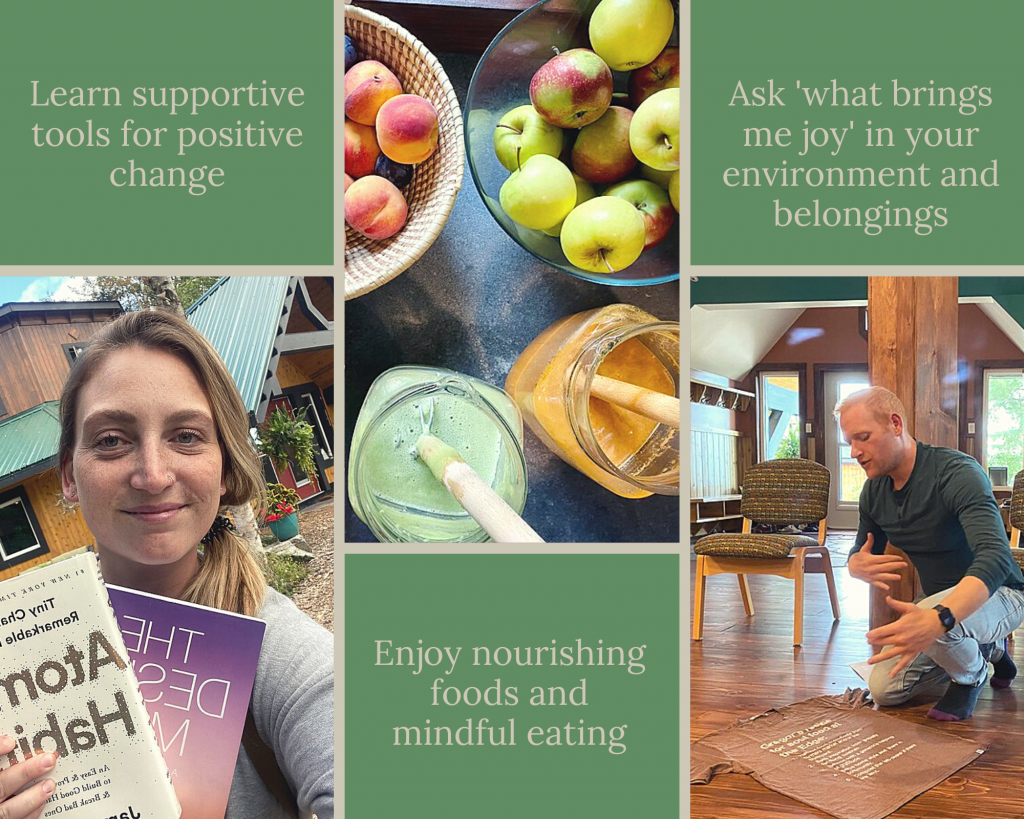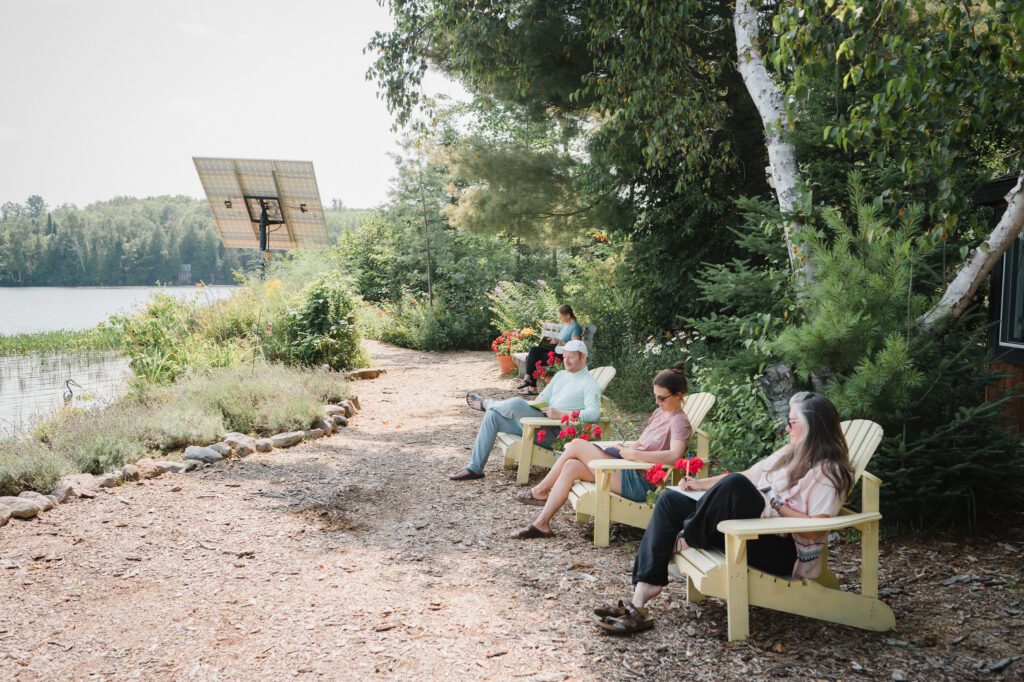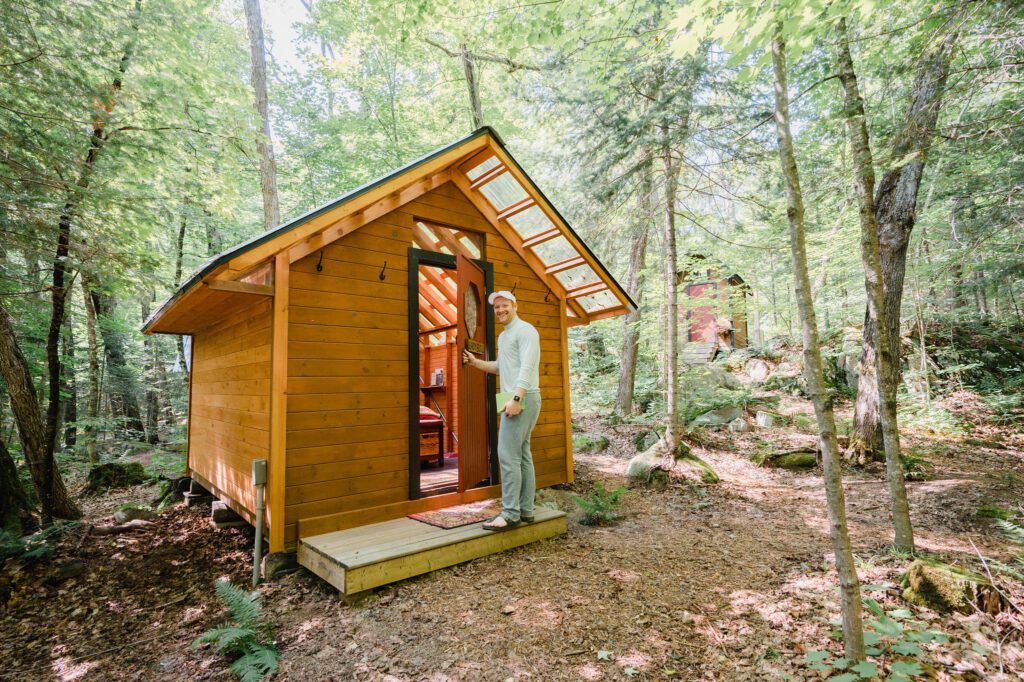Estimated reading time: 7 minutes
“Every action you take is a vote for the type of person you wish to become. No single instance will transform your beliefs, but as the votes build up, so does the evidence of your new identity. This is one reason why meaningful change does not require radical change. Small habits can make a meaningful difference by providing evidence of a new identity. And if a change is meaningful, it is actually big.”
James Clear, Atomic Habits: An Easy & Proven Way to Build Good Habits & Break Bad Ones
The beginning of a new year is a time for reflection and realignment. It typically serves as a clean slate for reimagining healthy habits, for dreaming of the new year ahead, and then for making commitments (resolutions) to ourselves to take action towards bringing those dreams to life.
Often times we move into these resolutions with tough love and having decided firmly on a course of action that may be a bit of a stretch from our current habits. Despite all our good intentions, it’s not uncommon for these resolutions to fall off after a few weeks if we don’t have the appropriate support systems and habits in place. As James Clear, the author of Atomic Habits says, “You do not rise to the level of your goals. You fall to the level of your systems.”
Clear also says, “Goals are good for setting a direction but systems as best for making progress”. This is good news for our new year’s hopes and dreams – if we can use our goals to set direction and then focus our efforts and actions on the systems which support the goals this is where we can affect big and sustained change in our lives. With this in mind, no dream becomes too grand when the system which supports it is broken down into small, consistent, and intentional actions.
Whether you love or loathe resolutions and goal setting, we’ve got four steps to share with you to help shift your mindset and actions to improve your relationship with healthy habits in the new year.
Look At Your Current Habits
Before dreaming of where you want your habits to take you, it’s important to take a look at your current habits and where they have gotten you. This is an opportunity to examine your day-to-day systems and determine what is supportive and what can shift. Take a few moments to imagine your day, from the time you wake up until the time you go to sleep. Write down all of the habitual actions that you take.
Once you’ve identified the daily routines and actions that make up your life at this time, review them to determine if they are helpful or unhelpful, positive or negative, or healthy or unhealthy. Choose a pairing of words that feels aligned with you that can help you to identify which of those actions, if repeated, offer a benefit in the long run towards a healthy mind and body and in achieving your goals and desired outcomes.
This step helps with understanding that our current state reflects back the habits of our past. According to Clear, “Your outcomes are a lagging measure of your habits”. This means that our current habits and the actions that we take today are shaping our future. So, if we want to be living a healthy lifestyle tomorrow, we must implement healthy morning routines and other healthy habits today.
What do you notice about your current habits? Are there some that are really supportive and others that may be holding you back from your goals and dreams, which you are ready to release?

Transform your life today with the Habit Cycle Worksheet!
Learn how to identify, create and strengthen new beneficial habits that will empower you on your journey of growth. Get started now - change is just one step away.
A copy of our Habit Cycle Worksheet is on its way to your inbox.
Get Clear On Your Desired Identity
Now it’s time to vision forward. Over the next year, who do you want to become? What is your desired identity?
Set some time aside for dreaming of who you envision yourself becoming. Write out the type of person that you want to be. Include character qualities, what you’d like to experience, and what you imagine your ideal day to be like. What are the identities that you would like to embody? Perhaps you want to be someone who identifies as professional, organized, healthy, creative, or masterful.
Becoming who we wish to be comes down to repeatedly choosing a series of actions that align with that particular identity. If we want to be someone who is organized we can ask ourselves, ‘what would an organized person do?’ When we then take the action that an organized person would take we cast a vote that we are organized. With each vote of aligned action, you embody the desired identity of who you wish to become.
What type of person do you wish to become over the next year? How might you embody that and what actions would a person with that identity take each day to reinforce who they are?
Implement Tiny Healthy Habits
Now that you know what habits you currently have, as well as the vision you hold for yourself it’s time to move into action through the implementation of tiny habits. The term ‘tiny habits’ was introduced by BJ Fogg as a behaviour that is repeated daily and requires little effort. Tiny habits are the scaled-down 30-second to 2-minute version of a habit which makes them easy to do and sustainable. These bite-sized tiny habits are much less overwhelming than a big change, are more accessible to add to your schedule, and offer great reward and positive momentum for minimum motivation.
Tiny habits are the placeholders that hold the potential for the full-sized version of the habit but start to transition you to step into the identity that you wish to embody. You are more likely to stick with a tiny habit and they will move you big leaps forward with small, consistent, intentional action. Once you’re confident that your tiny habits are firmly in place you may start to scale them up.
An example of a tiny habit in action: If you wish to embody the identity of a writer start with a tiny habit of writing for only 2 minutes each day. This might seem silly and too little but it creates a strong foundation to build on as you are more likely to implement writing for 2 minutes a day rather than jumping into an expectation of writing for 30 minutes a day. Once the routine of 2 minutes is firmly in place, slowly start to scale up the tiny habit by increasing the time (5 minutes per day) or the frequency (2 sessions of 2 minutes per day). The tiny habit should also always be used to fall back on as a bare minimum placeholder on the days where you cannot complete the full expression of the habit, in order to keep the habit consistent.
Take some time to reflect on the actions that can support you towards becoming the type of person that you’d like to be. What are some possible 30-second to 2-minute tiny habit versions of these actions that you could begin to implement?
Set Up Your Environment for Success
Your environment plays a big role in your daily habits, such as cues and triggers which shape habitual behaviour. It is essential to set up your environment in a way that supports the execution of healthy habits and makes the decision for taking your desired action easy to carry out.
Take a look around your environment to identify and remove triggers that deter you from your aligned efforts and replace them with positive associations where possible. This could look like placing your journal or writing book open on your desk or nightstand where it is ready to complete the tiny habit of writing each day. When motivation is low, what are the systems within your environment that you can set up to help you be more likely to successfully carry out your desired habits?
Your environment also includes your thoughts and what goes on inside your head. Be sure to speak to yourself kindly and as an ally as you move through change, using positive and affirming language. By holding the vision of the type of person that you’d like to become and implementing tiny habits in support of that you can anticipate building pathways of positive change within your brain. Perhaps you might consider including affirmations or Mel Robbins’ The High 5 Habit as one of your tiny habits.
What elements of your environment need to shift to help you take aligned action on your desired habits and where can you introduce systems of support and positive cues?
Like what you read?
We bet you’d enjoy this article to Creating Habits for Health and Wellness


Transform your life today with the Habit Cycle Worksheet!
Learn how to identify, create and strengthen new beneficial habits that will empower you on your journey of growth. Get started now - change is just one step away.
A copy of our Habit Cycle Worksheet is on its way to your inbox.

You've been signed up to receive news, updates, stories, and special offers from The Edge!



